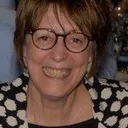Stay in the Loop
BSR publishes on a weekly schedule, with an email newsletter every Wednesday and Thursday morning. There’s no paywall, and subscribing is always free.
The art of Emily Dickinson’s garden
Brandywine Museum of Art presents This Earthen Door: Nature as Muse and Material

Now on view at the Brandywine Museum of Art is an elegant cross-disciplinary exhibition that adds new perspective to the life and work of Emily Dickinson. Lauded now as a deeply thoughtful American poet, Dickinson was more noted in her lifetime for her garden and as a student of botany, something that contemporary artists Amanda Marchand (b. 1972) and Leah Sobsey (b.1973) thoughtfully explore in This Earthen Door: Nature as Muse and Material.
Dickinson would gift people with bouquets that had small poems attached, and she created a 66-page herbarium, a book of more than 400 pressed plants with detailed notes about each cultivar. These mid-19th-century botanical studies are meticulous and detailed (unlike the more famous but less thorough notebook of Thoreau). Marchand and Sobsey considered Dickinson’s book to be a work of art, and it was the inspiration for this lovely and thoughtful exhibition.
Held in a temperature-controlled vault in Harvard’s Houghton Library, the poet’s herbarium can only be viewed as a reproduction, though many of the plants that inspired it are still growing on the Dickinson Trail in Amherst, Massachusetts. Inspired by the poet’s naturalistic vision and the beauty of her fragile creation, Marchand and Sobsey set out to recreate and embellish that work.
Natural processes
In their own gardens, the two artists each grew 33 of the 66 flower varieties found in Dickinson’s herbarium. They then photographed the plants and set out to document them using eco-friendly processes to create natural pigments. They created these pigments in two different ways—grinding them in a mortar and pestle or rubbing them directly onto paper—and made “pages” inspired by those in the original herbarium.
They photographed their pages digitally and then printed them in an archival pigment process (standard for digital photography) that also speaks to the art of printmaking. The result was a series of “anthotypes,” prints created via a plant-based process that is one of the earliest forms of photography. Created in 1842, it requires treating paper with a plant emulsion and then putting the plant on the paper.
To create the artists’ works, digital negatives were placed on top, with exposures that ranged from a day to several months. These 19 evocative prints (all made in 2025) range in size, but most are 40” x 30”, and all are titled with numbers from Dickinson’s volume, like Herbarium Plate 36 – Purple Tulip, Herbarium Plate 54 – Purple Pansy, and Herbarium Plate 13 – Purple Common Foxglove.
From their work sessions, the duo also developed a series of color compositions they dubbed “Chromotaxia.” Composed using the pure pigment from the flowers, each work (some as large as 80” x 50”) is titled with a quote from a Dickinson poem. These are swatches of natural colors, printed on paper and mounted on board, that provide further insight into both the artists’ processes and the colors of nature.
This elegant, quite conceptual exhibition of 50 works is mounted with Brandywine’s exceptional care and artistry, including one small exhibition area that includes a wall reproducing the rose wallpaper from Dickinson’s house.
The art of conservation
The Brandywine also commissioned Marchand and Sobsey to work with local naturalists and land stewards to create two site-specific works for the museum, each titled with lines from a Dickinson poem. The first is titled Estranged from Beauty – none can be –, documenting invasive species found in the Conservancy’s Waterloo Mills Preserve. The second is titled Talk not to me of Summer Trees, a chromotaxy of the pure colors of 14 native trees (also at Waterloo Mills), documenting their shift in color from summer through fall. Ten of the artists’ 56 botanical anthotypes are on display.
At the exhibition opening, Brandywine curator Amanda Burdan also called attention to the conservancy’s new website, serendipitously launched in tandem with this exhibition and speaking directly to it.
Merging the artists’ visions with the mission of the museum and the Brandywine Conservancy, This Earthen Door was created to draw attention to an increasing “plant invisibility” and illuminate how we ignore the natural world, and to reinforce the strength, chemistry, symbolism, and overall importance of the plant world.
Muse and material
The artists feel that in addition to its artistic aims and focus on Dickinson’s horticultural prowess, their work is also an exploration of Victorian floriography (the meaning of flowers) and a look at the natural world that may allow both scientists and the general public to visualize the mission of conservation and preservation in a way that no printed list is able to accomplish.
The exhibition’s elegance, depth of thought, and gentility aptly reflect Dickinson’s naturalistic explorations, as well as creating a worthy comment on her distinctive poetics. This Earthen Door repays thought and study with a new look at the world surrounding us, proving that (as these artists discovered) nature is indeed both muse and material.
At top: Amanda Marchand and Leah Sobsey, Herbarium Plate 13 – Purple Common Foxglove, 2023, archival pigment print (made from original anthotype) 40 x 30 in. (Courtesy of the artists and Rick Wester Fine Art, NYC.) © Amanda Marchand & Leah Sobsey.
What, When, Where
This Earthen Door: Nature as Muse and Material. Through September 7, 2025, at the Brandywine Museum of Art, 1 Hoffman’s Mill Road, Chadds Ford. $8-$20; free for members and kids under 6. (610) 388-2700 or brandywine.org.
Accessibility
The entire museum (including the Millstone Café) is wheelchair accessible, with accessible parking, a barrier-free entrance, and available wheelchairs. Service animals are welcome.
Sign up for our newsletter
All of the week's new articles, all in one place. Sign up for the free weekly BSR newsletters, and don't miss a conversation.

 Gail Obenreder
Gail Obenreder